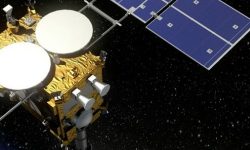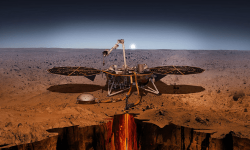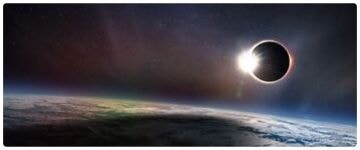
6% of meteorites on Earth would come from Vesta
In the early 2010s, the data collected by the three scientific instruments embarked on the Dawn space probe revealed the complexity of Vesta, a celestial body that could be classified between an asteroid and a planet. Like a planet, the structure of Vesta is differentiated, because it has a metallic core surrounded by a mantle and a crust. Vesta most likely generated a magnetic field in its youth but its overall diameter of only 530 km makes it today a dead celestial body.
The southern hemisphere of the planetoid reveals traces of a very violent past. Two huge craters testify to impacts that almost broke Vesta. These impacts would have propelled many rocky materials through the solar system. Nearly 6% of the meteorites found on Earth would come from Vesta. The planetoid helps us to imagine what the protoplanets of the inner solar system looked like.
Image by NASA / JPL-Caltech / UCLA / MPS / DLR / IDA (JPL PHOTOJOURNAL) [Public domain], via Wikimedia Commons









